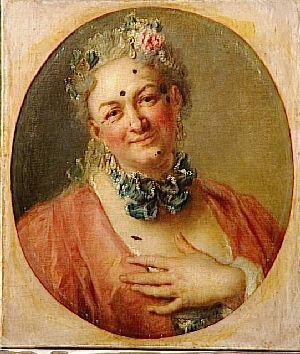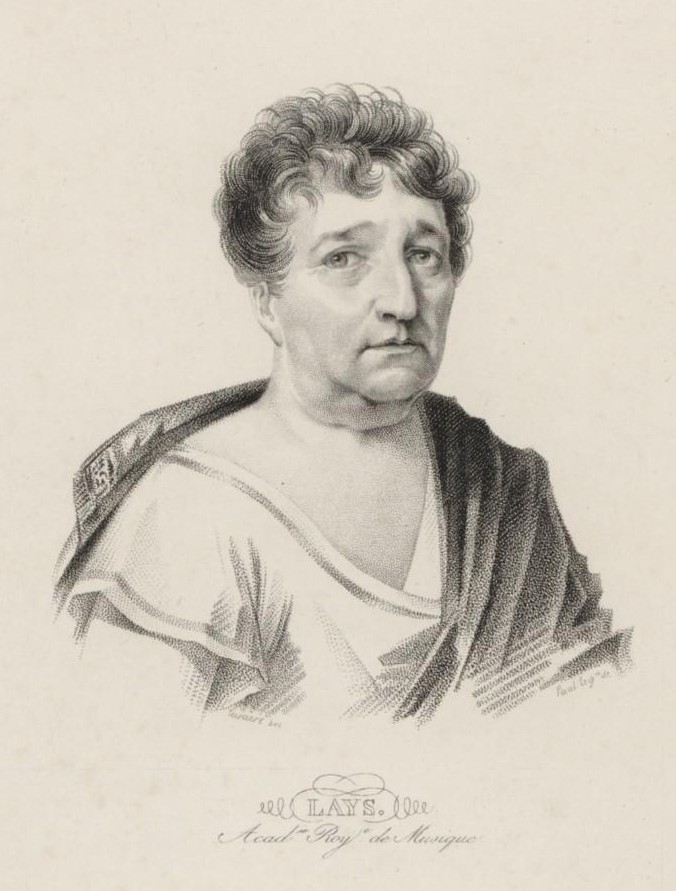|
Colinette à La Cour
''La double épreuve, ou Colinette à la cour'', is a ''comédie lyrique'' (comic opera) in three acts written by André Grétry in 1782 to a French libretto by Jean-Baptiste Lourdet de Santerre, based on Charles Simon Favart's '.Bartlet 1992. Performance history It was first performed on 1 January 1782 by the Académie Royale de Musique (Paris Opera) at the Théâtre de la Porte-Saint-Martin, and included choreography by Maximilien Gardel.Pitou, vol. 1 (1983), p. 30 (theatre); vol. 2 (1985), pp. 169–170, 568 (choreographer). Roles References ;Notes ;Sources * Original libretto: ''La Double Épreuve, ou Colinette à la cour, comédie lyrique en trois actes'', Paris, De Lormel, 1782 (accessible online ibooks google * Bartlet, M Elizabeth C (1992), 'Grétry, André-Ernest-Modeste' (work-list) in ''The New Grove Dictionary of Opera'', ed. Stanley Sadie Stanley John Sadie (; 30 October 1930 – 21 March 2005) was an influential and prolific British musicologist, music criti ... [...More Info...] [...Related Items...] OR: [Wikipedia] [Google] [Baidu] |
André Ernest Modeste Grétry
André — sometimes transliterated as Andre — is the French and Portuguese form of the name Andrew, and is now also used in the English-speaking world. It used in France, Quebec, Canada and other French-speaking countries. It is a variation of the Greek name ''Andreas'', a short form of any of various compound names derived from ''andr-'' 'man, warrior'. The name is popular in Norway and Sweden. Cognate names Cognate names are: * : Andrei, |
French-language Operas
French opera is one of Europe's most important operatic traditions, containing works by composers of the stature of Rameau, Berlioz, Gounod, Bizet, Massenet, Debussy, Ravel, Poulenc and Messiaen. Many foreign-born composers have played a part in the French tradition as well, including Lully, Gluck, Salieri, Cherubini, Spontini, Meyerbeer, Rossini, Donizetti, Verdi and Offenbach. French opera began at the court of Louis XIV of France with Jean-Baptiste Lully's ''Cadmus et Hermione'' (1673), although there had been various experiments with the form before that, most notably '' Pomone'' by Robert Cambert. Lully and his librettist Quinault created ''tragédie en musique'', a form in which dance music and choral writing were particularly prominent. Lully's most important successor was Rameau. After Rameau's death, the German Gluck was persuaded to produce six operas for the Paris, Parisian stage in the 1770s. They show the influence of Rameau, but simplified and with greater foc ... [...More Info...] [...Related Items...] OR: [Wikipedia] [Google] [Baidu] |
Operas
Opera is a form of theatre in which music is a fundamental component and dramatic roles are taken by singers. Such a "work" (the literal translation of the Italian word "opera") is typically a collaboration between a composer and a librettist and incorporates a number of the performing arts, such as acting, scenery, costume, and sometimes dance or ballet. The performance is typically given in an opera house, accompanied by an orchestra or smaller musical ensemble, which since the early 19th century has been led by a conductor. Although musical theatre is closely related to opera, the two are considered to be distinct from one another. Opera is a key part of the Western classical music tradition. Originally understood as an entirely sung piece, in contrast to a play with songs, opera has come to include numerous genres, including some that include spoken dialogue such as ''Singspiel'' and ''Opéra comique''. In traditional number opera, singers employ two styles of singing: ... [...More Info...] [...Related Items...] OR: [Wikipedia] [Google] [Baidu] |
Operas By André Grétry
Opera is a form of theatre in which music is a fundamental component and dramatic roles are taken by singers. Such a "work" (the literal translation of the Italian word "opera") is typically a collaboration between a composer and a librettist and incorporates a number of the performing arts, such as acting, scenery, costume, and sometimes dance or ballet. The performance is typically given in an opera house, accompanied by an orchestra or smaller musical ensemble, which since the early 19th century has been led by a conductor. Although musical theatre is closely related to opera, the two are considered to be distinct from one another. Opera is a key part of the Western classical music tradition. Originally understood as an entirely sung piece, in contrast to a play with songs, opera has come to include numerous genres, including some that include spoken dialogue such as '' Singspiel'' and '' Opéra comique''. In traditional number opera, singers employ two styles of ... [...More Info...] [...Related Items...] OR: [Wikipedia] [Google] [Baidu] |
Stanley Sadie
Stanley John Sadie (; 30 October 1930 – 21 March 2005) was an influential and prolific British musicologist, music critic, and editor. He was editor of the sixth edition of the '' Grove Dictionary of Music and Musicians'' (1980), which was published as the first edition of ''The New Grove Dictionary of Music and Musicians''. Along with Thurston Dart, Nigel Fortune and Oliver Neighbour he was one of Britain's leading musicologists of the post-World War II generation. Career Born in Wembley, Sadie was educated at St Paul's School, London, and studied music privately for three years with Bernard Stevens. At Gonville and Caius College, Cambridge he read music under Thurston Dart. Sadie earned Bachelor of Arts and Bachelor of Music degrees in 1953, a Master of Arts degree in 1957, and a PhD in 1958. His doctoral dissertation was on mid-eighteenth-century British chamber music. After Cambridge, he taught at Trinity College of Music, London (1957–1965). Sadie then turned to musi ... [...More Info...] [...Related Items...] OR: [Wikipedia] [Google] [Baidu] |
New Grove Dictionary Of Opera
''The New Grove Dictionary of Opera'' is an encyclopedia of opera, considered to be one of the best general reference sources on the subject. It is the largest work on opera in English, and in its printed form, amounts to 5,448 pages in four volumes. First published in 1992 by Macmillan Reference, London, it was edited by Stanley Sadie with contributions from over 1,300 scholars. There are 11,000 articles in total, covering over 2,900 composers and 1800 operas. Appendices including an index of role names and an index of incipits of arias, ensembles, and opera pieces. The dictionary is available online, together with ''The New Grove Dictionary of Music and Musicians''. References *William Salaman, "Review: The New Grove Dictionary of Opera", ''British Journal of Music Education'' (1999), 16: 97-110 Cambridge University Pres*John Simon, "Review: The New Grove Dictionary of Opera, 4 vols.", ''National Review'', April 26, 199* * *Charles Rosen, "Review: The New Grove Dictionary of O ... [...More Info...] [...Related Items...] OR: [Wikipedia] [Google] [Baidu] |
Haute-contre
The haute-contre (plural hautes-contre) was the primary French operatic tenor voice, predominant in French Baroque and Classical opera, from the middle of the seventeenth century until the latter part of the eighteenth century. History This voice was predominantly used in male solo roles, typically heroic and amatory ones, but also in comic parts, even ''en travesti'' (see apropos the portrait reproduced below and representing Pierre Jélyotte made up for the female title role of Rameau's ''Platée''). Lully wrote 8 out of 14 leading male roles for the voice; Charpentier, who was an haute-contre himself, composed extensively for the voice-part, as did Rameau and, later, Gluck. The leading ''hautes-contre'' of the ''Académie Royale de Musique'' that created the main roles of Lully's operas, at the end of the seventeenth century, were Bernard Clédière (who started off as a ''taille'', a lower Tenor voice type) and Louis Gaulard Dumesny. Notable ''hautes-contre'' of the eighteent ... [...More Info...] [...Related Items...] OR: [Wikipedia] [Google] [Baidu] |
François Lays
François Lay, better known under the stage name Lays (14 February 1758 – 30 March 1831), was a French baritone and tenor opera singer. Originally destined for a career in the church, Lays was recruited by the Paris Opéra in 1779. He soon became a leading member of the company, in spite of quarrels with the management. Lays enthusiastically welcomed the French Revolution and became involved in politics with the encouragement of his friend Bertrand Barère. Barère's downfall led to Lays being imprisoned briefly, but he soon won back the public and secured the patronage of Napoleon, at whose coronation and second wedding he sang. This association with the Emperor caused him trouble when the Bourbon monarchy was restored and Lays's final years were darkened by disputes over his pension, mounting debts, the death of his only son and his wife's illness. After a career spanning more than four decades, he died in poverty. Lays was famous for the beauty of his voice. One of the Op� ... [...More Info...] [...Related Items...] OR: [Wikipedia] [Google] [Baidu] |
Baritone
A baritone is a type of classical male singing voice whose vocal range lies between the bass and the tenor voice-types. The term originates from the Greek (), meaning "heavy sounding". Composers typically write music for this voice in the range from the second F below middle C to the F above middle C (i.e. F2–F4) in choral music, and from the second A below middle C to the A above middle C (A2 to A4) in operatic music, but the range can extend at either end. Subtypes of baritone include the baryton-Martin baritone (light baritone), lyric baritone, ''Kavalierbariton'', Verdi baritone, dramatic baritone, ''baryton-noble'' baritone, and the bass-baritone. History The first use of the term "baritone" emerged as ''baritonans'', late in the 15th century, usually in French sacred polyphonic music. At this early stage it was frequently used as the lowest of the voices (including the bass), but in 17th-century Italy the term was all-encompassing and used to describe the averag ... [...More Info...] [...Related Items...] OR: [Wikipedia] [Google] [Baidu] |
Bass-baritone
A bass-baritone is a high-lying bass or low-lying "classical" baritone voice type which shares certain qualities with the true baritone voice. The term arose in the late 19th century to describe the particular type of voice required to sing three Wagnerian roles: the title role in ''Der fliegende Holländer'', Wotan/Der Wanderer in the ''Ring Cycle'' and Hans Sachs in '' Die Meistersinger von Nürnberg''. Wagner labelled these roles as ''Hoher Bass'' ("high bass")—see fach for more details. The bass-baritone voice is distinguished by two attributes. First, it must be capable of singing comfortably in a baritonal tessitura. Secondly, however, it needs to have the ripely resonant lower range typically associated with the bass voice. For example, the role of Wotan in ''Die Walküre'' covers the range from F2 (the F at the bottom of the bass clef) to F4 (the F above middle C), but only infrequently descends beyond C3 (the C below middle C). Bass-baritones are typically divide ... [...More Info...] [...Related Items...] OR: [Wikipedia] [Google] [Baidu] |






